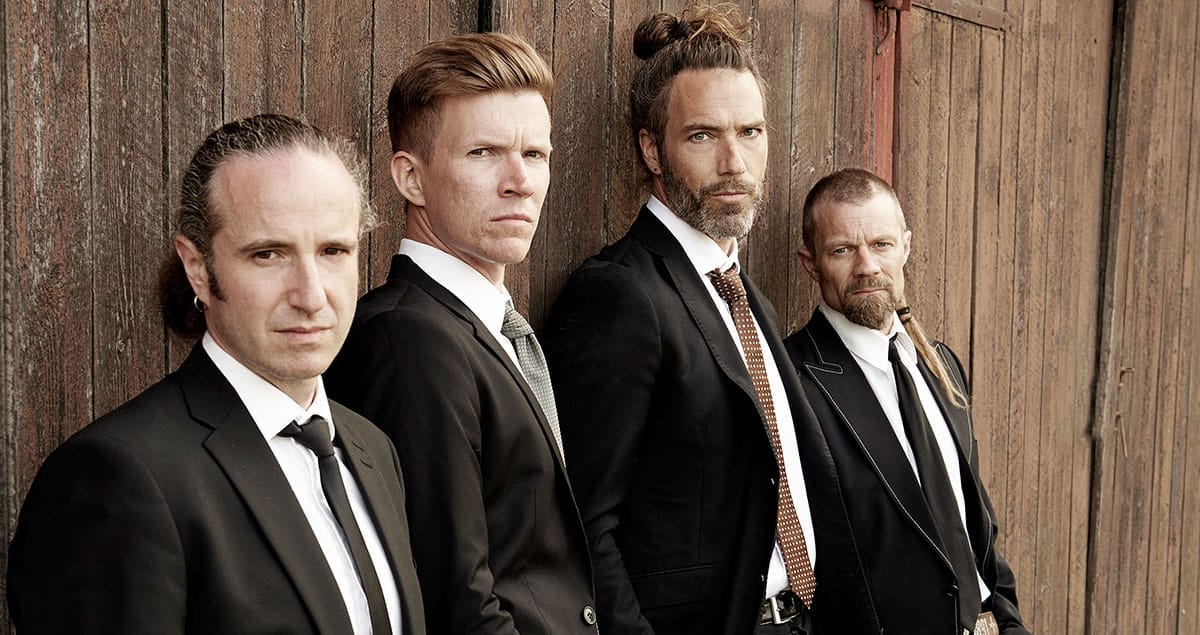Pain of Salvation: Masters of Progressive Metal Artistry
Formation and Origin
Pain of Salvation, a Swedish progressive metal band known for their intricate compositions and deep thematic albums, was formed in 1984 in Eskilstuna, Sweden, under the name “Reality.” The band was the brainchild of Daniel Gildenlöw, who has remained the driving force, lyricist, and creative leader. In 1991, the name was changed to Pain of Salvation, reflecting their evolving musical ambition and lyrical depth.
Band Members
Pain of Salvation’s lineup has undergone several changes, but Daniel Gildenlöw remains the heart and soul of the band. Significant members include:
- Daniel Gildenlöw: Lead vocals, guitar, and the primary songwriter.
- Johan Hallgren: Guitar and backing vocals, known for his dynamic stage presence.
- Gustaf Hielm: Bass guitar, contributing rich textures to the band’s sound.
- Daniel “D2” Karlsson: Keyboards, integral to the band’s progressive arrangements.
- Léo Margarit: Drums and backing vocals, adding technical precision and energy.
Discography and Key Albums
Pain of Salvation has released a series of critically acclaimed albums, each exploring unique musical and conceptual territories:
- Entropia (1997): A debut full of complex arrangements and emotional depth, addressing themes like war and family dynamics.
- The Perfect Element, Part I (2000): A conceptual masterpiece examining human trauma and growth, blending aggression and melodic beauty.
- Remedy Lane (2002): A deeply personal album, reflecting on love, loss, and self-discovery, often regarded as their magnum opus.
- BE (2004): A conceptual exploration of humanity’s existence and purpose, featuring orchestral arrangements.
- Scarsick (2007): A politically charged sequel to The Perfect Element, Part I, critiquing modern society.
- In the Passing Light of Day (2017): Inspired by Gildenlöw’s near-fatal illness, this album is an emotional journey through pain, resilience, and hope.
Musical Themes and Style
Pain of Salvation’s music is characterized by its eclectic approach, combining elements of progressive rock, metal, jazz, funk, and even pop. Their lyrics often delve into philosophical, emotional, and social themes, tackling topics like existentialism, spirituality, and societal critique.
Interesting Facts
- Near-Death Experience: In the Passing Light of Day was heavily inspired by Gildenlöw’s life-threatening battle with necrotizing fasciitis, providing raw emotional intensity.
- Versatile Performances: The band often reimagines their music for live performances, incorporating acoustic arrangements or stripped-down versions.
- Global Recognition: Pain of Salvation has achieved worldwide acclaim, earning a dedicated fan base and influencing modern progressive music.
Legacy and Influence
Pain of Salvation is celebrated as one of the most innovative bands in progressive metal, consistently pushing boundaries with their artistic integrity and conceptual depth. Their ability to blend complex musical structures with emotionally charged narratives has made them a cornerstone of the genre.
Conclusion
Pain of Salvation stands as a testament to the transformative power of music, weaving technical brilliance with profound storytelling. Led by Daniel Gildenlöw’s unyielding vision, the band continues to captivate audiences and redefine what progressive metal can achieve.




